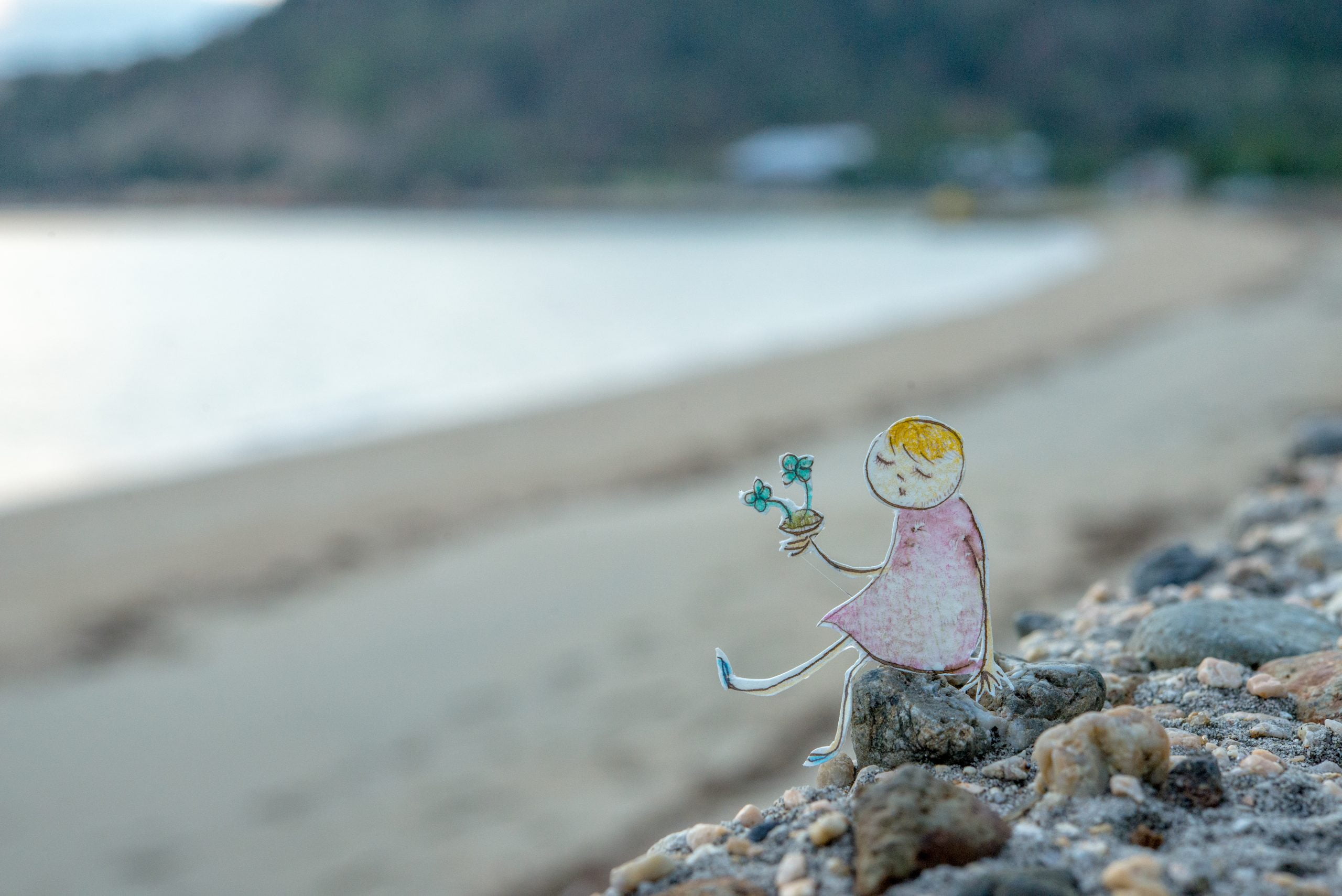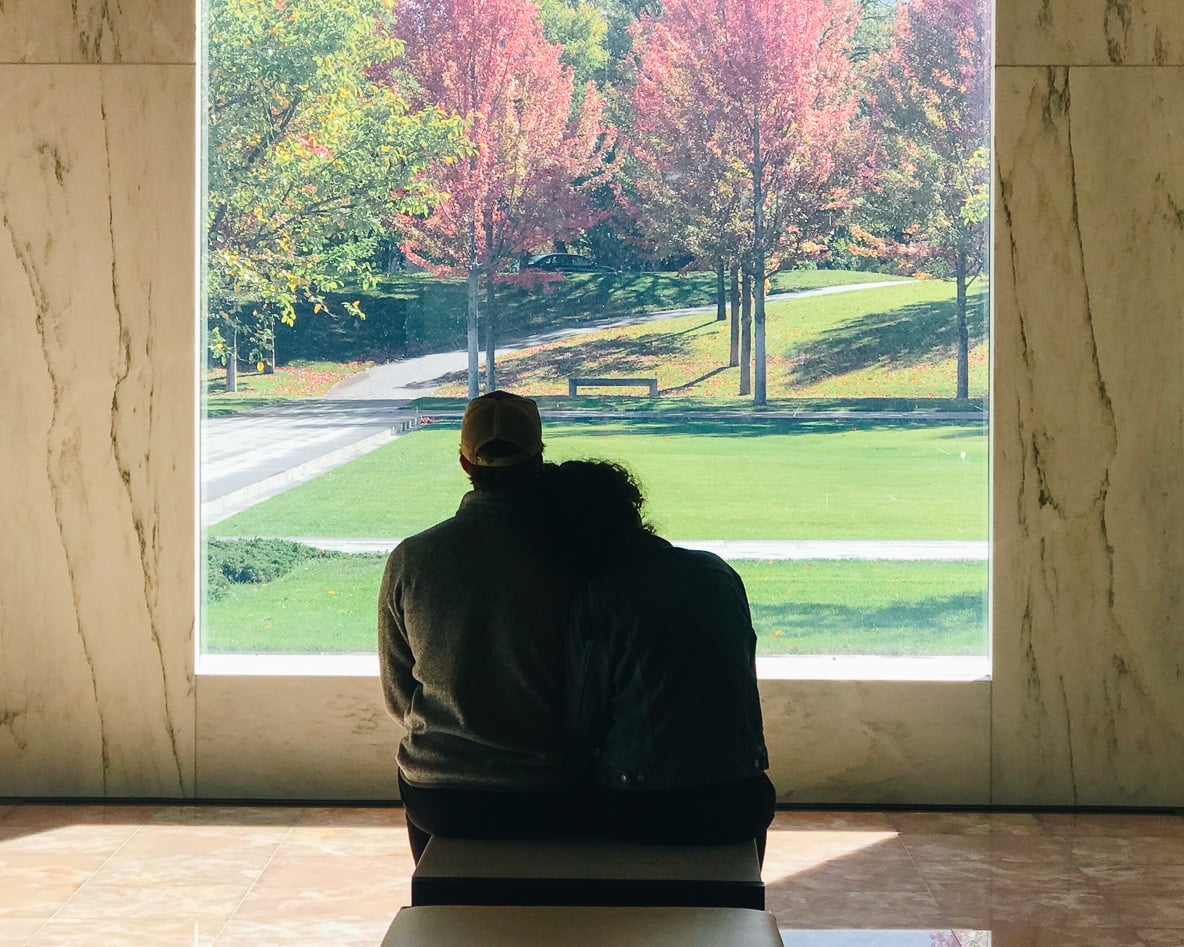The healing power of horses
Three horses stand with me in a paddock in rural Wiltshire. One is dappled grey, muscular and beautiful. There is a little Shetland pony with a thick coat that reminds me of the woollen fur of a love-worn teddy and there is a third horse, dark chestnut, with a rough coat. Most of the time, he is preoccupied with eating – his beautiful long neck, like a dragon from a storybook, bent to the ground. The only sound is the constant ripping of grass by teeth. I have never been a rider, and have found horses intimidating in the past – but I’m curious to find out about their therapeutic value, having read about how it’s been used to treat everything from PTSD in war veterans to childhood trauma and suffering in all its forms: depression, anxiety and relationship problems.
In the field with me are Nina Thomson, who runs Track Clinic, an equine-assisted therapy centre, and her partner for the day, an integrative psychotherapist named Paula. ‘Equine-assisted therapy is more widely used in the US than here,’ says Thomson. ‘But interest is growing in the UK. Therapists and clients who are unfamiliar with this way of working are often sceptical at first but, once they try it, they are surprised and inspired by the insights it can generate.’ Thomson puts this down, at least in part, to the way that horses can sense our intentions and inner states.
‘They are highly responsive, sensitive creatures who tune into human beings. Research shows they have the ability to synchronise their heart rate with ours, even from a few feet away.’ She explains that equine-assisted therapy needs to happen in a setting with ideally more than two horses: ‘Horses are herd animals and, in the herd setting, they respond to human participants with the same “palate” of emotional and physical responses they use to express themselves. This reaction, and the human client’s perception of it, reveals a lot about the psyche of the client.’
In the three years since she set up her clinic, Thomson has been moved and surprised by the unusual responses of her horses to a range of clients with a spectrum of psychological profiles.
‘I have seen my therapy horses respond to people in ways that I’ve never seen horses respond before,’ says Thomson. ‘I’ve seen them lie down in a circle around a client with a terminal disease, run alongside a client who needed to feel connected and empowered, nudge a client from one side of the paddock to the other as a way of bringing attention to their boundaries and personal space, stand stock-still next to a fostered child with a head wrapped around their middle so they could feel a sense of stability. Their reaction is always purely instinctive and seems, without fail, to generate a reaction from the client that is meaningful.’
At the start of a session there is a gentle invitation to spend some time with the horses with no agenda to achieve anything in particular. ‘We often find that the first few minutes of a session are very poignant, revealing the dynamic at play and highlighting the blocks that need shifting,’ says Thomson.
She puts me in touch with a client of hers who illustrates the point. Jo was struggling with a combination of challenges in her personal life when she came for her first session. ‘When I got close to the horses, I had an immediate urge to sit down in front of the biggest horse with my back to him. I’m experienced with horses and everything told me this was a risky thing to do, but I just needed to do it. I asked the therapists if it was OK and they reassured me that they would stop anything they felt was unsafe, telling me I should trust my instinct. No sooner had I sat down, when I felt a warm, heavy muzzle resting on the top of my head. Tears started to flow and I stayed in this position – as did the horse, despite other horses moving around him – until the session ended. I left with a profound sense of self-trust during a time when I felt vulnerable to the core.’
This sense of deep and simple self-realisation seems to be a common theme. ‘Lots of people find that when they get stuck in conventional therapy, a few sessions of equine-assisted therapy can get things moving,’ says horse-led therapist, coach and author Pam Billinge, who offers horse-led interventions and retreats in the UK and France. ‘There are many scientific reasons why horses are good at helping us learn about ourselves: they are prey animals, so are finely tuned to pick up on the most subtle of emotional and energetic signals. When we learn with horses, we enter into a unique, vibrant and dynamic relationship with them.
They help us connect with our creative emotional brain (the right brain), instead of relying on our rational left brain, which is where our stories, anxieties and negative thinking lie. They help us to be fully present in our body and it is this felt sense of our emotional experience in the moment that can be transformational.
When we learn to honour and communicate with horses, it helps us reframe our perception of ourself and others, moving beyond blame and guilt.
Horses also get straight to the point, says Billinge. ‘They have clear boundaries and say what needs to be said, when it needs saying. This honesty helps us reach our own truth very quickly. Horses enable us to access the full range of our emotional experience and connect us with a sense of our true self – in a peaceful, joyful and safe way. They are non-judgmental.’
In the field, I can see what she means. Horses are living metaphor. Thomson has advised me to approach the session with a few questions and thoughts in mind. I’m feeling stuck and fed up with my anxious over-thinking, so I choose to focus on that.
To me, the small horse is myself (I have always had a private notion of myself as a Shetland pony trudging along, whatever the weather). The grey horse approaches me a few times, but I’m convinced it is because he thinks I have food for him, and that he’ll be disappointed when I don’t. I also think he’s more drawn to the other people in the field (especially my friend, Helen, who is visiting with me). Every time the grey approaches, he puts his nose to my heart. At the end of the session, the dark horse stops eating and comes up behind me, wrapping me in his body in what feels like a protective hug.
I have a sense that the grey horse is communicating with me by cutting through the automatic negative thinking that tells me he only wants to be friendly in exchange for food. His nose is pressed onto my chest and he seems to be saying: ‘Here you are, this is what is real. I feel you. You know it.’ It feels like a powerful communication and, driving home afterwards, I’m emotional. It reminds me to zone out the anxious thinking and to focus on what I feel at an intuitive level.
‘You can’t hide what is going on from horses, the truth comes out,’ says Anna, a mother of two from the Cotswolds who tried equine-assisted therapy with her children after a bereavement. It’s a thought that reminds me of Virginia Woolf’s statement: ‘Blame it, or praise it, there is no denying the wild horse in us.’
At a time when the wildness within us all is under constant attack from the ‘civilising’ forces of technology, it seems more imperative than ever to do what we can to open our ears and hearts to it.
The Science
Much has been written on the use of equine-assisted psychotherapy in addiction recovery and in the therapy of children with ASD and ADHD. A newly published study in the US, which looked at the impact of equine-assisted therapy on 25 children with ADHD, ADD and autism, found that a year on, children saw improvements in motor skills, behaviour, academic performance and social and communication skills. Similar studies show that equine-assisted psychotherapy reduced the violent behaviour of psychiatric inpatients and improved the psychological functioning of adolescents who had suffered sexual abuse.
Next Steps
WATCH: The Ted talk ‘Wisdom of the herd’ with Ruud Knaapen, a Dutch equine-assisted coach, is a moving account of his professional and personal experiences.
LISTEN: The Boy, The Mole, The Fox And The Horse by Charlie Mackesy, resounds with the depth of feeling and healing horses offer. Listen on vinyl, available from charliemackesy.com.
READ: The Spell Of The Horse: Stories Of Healing And Personal Transformation With Nature’s Finest Teachers by Pam Billinge (Blackbird, £9.99).
Words: Zoe McDonald
Photograph: Getty Images
This article was originally published by psychologies.co.uk Read the original article here.


